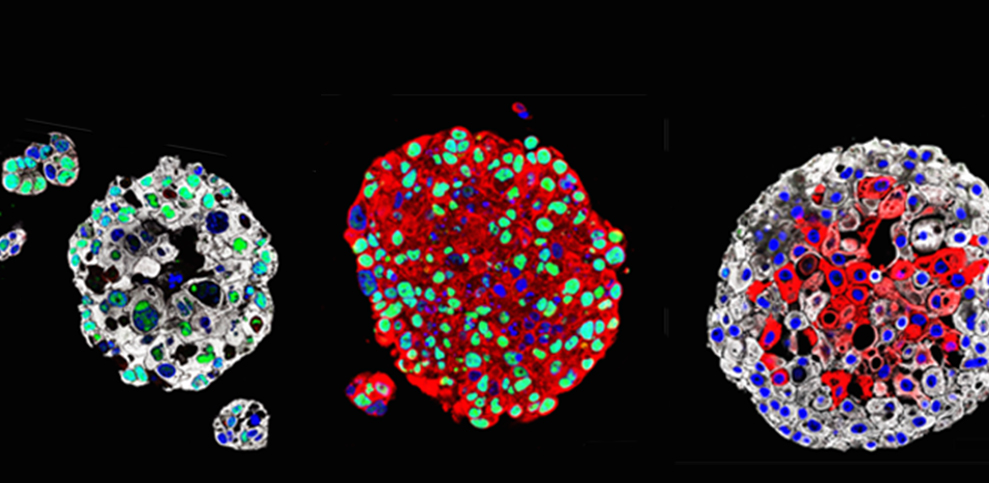News
Organoids Created from Patients’ Bladder Cancers Could Guide Treatment

Organoids created from the bladder cancers of patients mimic the characteristics of each patient’s tumor and may be used in the future to identify the best treatment for each patient. Images: Michael Shen
Columbia University Irving Medical Center (CUIMC) and NewYork-Presbyterian researchers have created patient-specific bladder cancer organoids that mimic many of the characteristics of actual tumors. As reported by CUIMC, the use of organoids, tiny 3-D spheres derived from a patient’s own tumor, may be useful in the future to guide treatment of patients.
The study was published April 5 in the online edition of Cell.
In precision medicine, molecular profiling of an individual patient’s tumor is used to identify genetic mutations that drive that individual’s cancer. That knowledge may help physicians select the best drug to fight the cancer, but the analysis does not always predict how a patient will respond to specific therapies.
“The great advantage of organoids is that they are essentially avatars of a patient’s tumor,” said study leader Michael M. Shen, PhD, professor of medicine, genetics & development, urology, and systems biology at Columbia's Vagelos College of Physicians and Surgeons. “Having these personalized laboratory models, which we can make in a matter of weeks, will let us test multiple different drugs on the tumor and help us bring precision medicine to individuals with bladder cancer.”
Dr. Shen began developing bladder cancer organoids about four years ago. A major challenge in creating any type of organoid is determining the unique mixture of nutrients, growth factors, and tissue culture techniques that will transform patient tumor cells into miniature tumor organoids in a petri dish. The exact conditions can vary greatly from one type of cancer to another.
In the current study, organoids were made from the tumor cells of 22 patients with invasive bladder cancer. The researchers were able to make organoids from three patients both before and after treatment. “This offers a new way to study the molecular mechanisms associated with drug response and drug resistance,” said Dr. Shen.
For the complete article, visit the CUIMC Newsroom .